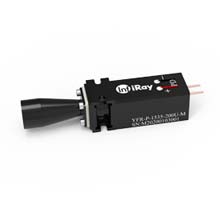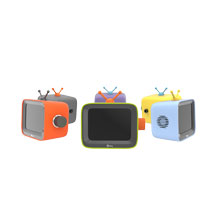Can a Thermal Camera Detect Industrial Air Leaks

In the expansive landscape of industrial operations, the pressing need to optimize efficiency and minimize energy wastage has led to the adoption of cutting-edge technologies. Among these innovations, thermal cameras emerge as powerful instruments with the potential to redefine industrial air leak detection. This article delves into the intricacies of thermal imaging and addresses the pivotal question: Can a thermal imaging camera effectively detect industrial air leaks?
How Thermal Cameras Work
To appreciate the role of thermal cameras in air leak detection, it's essential to understand their mechanics. Operating on the principles of infrared technology, these cameras capture the heat emitted by objects and surfaces. The sensors detect this infrared radiation and convert it into a thermal image that unveils temperature differences. This visual representation, with different colors or shades assigned to varying temperatures, becomes instrumental in detecting anomalies such as air leaks.
Thermal cameras transcend the limitations of the naked eye, providing a comprehensive view of the thermal landscape. Their precision in capturing and displaying temperature variations makes them invaluable for identifying potential issues and implementing timely interventions.

Significance of Industrial Air Leak Detection
The detection of air leaks in industrial settings holds paramount importance for optimizing energy efficiency. Unidentified leaks can result in substantial energy wastage, impacting operational costs and resource consumption. Proactively identifying and resolving air leaks contributes to sustainable and cost-effective operations.
Beyond financial implications, air leak detection carries environmental significance. Leaked air often contains pollutants and greenhouse gases that can harm the environment. Detecting and rectifying these leaks aligns with sustainable industrial practices and environmental responsibility. Additionally, air leak detection directly impacts equipment health, reducing wear and tear and contributing to the longevity of industrial machinery.
In terms of regulatory compliance, industrial air leak detection becomes a critical aspect. Many environmental regulations mandate monitoring and controlling emissions, making air leak detection a proactive measure to ensure adherence to standards and avoid legal consequences.

Factors Affecting Thermal Camera Detection
While thermal cameras boast impressive capabilities, certain factors can influence their effectiveness in detecting air leaks. Considerations such as material composition, surface characteristics, temperature differentials, and distance limitations all play a role in determining the accuracy of thermal imaging. Understanding these factors is key to harnessing the full potential of thermal imaging cameras for air leak detection.
Benefits of Using Thermal Cameras for Air Leak Detection
The integration of thermal cameras into air leak detection processes brings numerous benefits:
1. Elusive Leak Identification: A primary advantage lies in the efficacy of thermal cameras in identifying elusive leaks. Unlike traditional methods that may struggle with detecting hidden anomalies, these cameras leverage their capacity to visualize temperature variations, swiftly pinpointing leaks in hard-to-reach or obscured areas. This capability allows for swift intervention and preventive measures, ensuring that potential issues are addressed proactively.
2. Cost-Effectiveness: Cost-effectiveness stands out as another key benefit. Utilizing thermal cameras for air leak detection eliminates the need for labor-intensive manual inspections or costly equipment downtime. By providing real-time monitoring capabilities, these devices enable proactive maintenance, reducing operational costs and mitigating the financial impact of energy wastage caused by air leaks.

3. Real-Time Monitoring: The feature of real-time monitoring is pivotal in distinguishing thermal cameras in air leak detection. The ability to capture and analyze thermal images in real time facilitates immediate response to identified leaks. This proactive approach prevents potential equipment damage, enhances overall safety, and ensures the uninterrupted flow of industrial processes.
4. Versatility: The versatility of thermal cameras contributes to their cost-effectiveness. These devices find applicability across diverse industrial settings, ranging from manufacturing plants to energy facilities. Their adaptability to different environments underscores their value as a universal tool for detecting and addressing air leaks, making them an essential component of comprehensive maintenance programs.
5. Precision: Precision is a key attribute offered by thermal cameras, enhancing the accuracy of leak detection. By visualizing thermal patterns, these devices provide valuable insights into the precise location and extent of air leaks. This precision enables targeted interventions, minimizing the need for extensive repairs and optimizing the overall effectiveness of maintenance efforts.

Applications and Industries
The versatility of thermal cameras transcends various industries, establishing them as indispensable tools for detecting and addressing industrial air leaks.:
1. Manufacturing: In manufacturing, thermal cameras prove invaluable in identifying leaks in pipelines and detecting insulation gaps. The ability to visualize thermal patterns allows for precise identification of areas prone to air leaks, ensuring prompt corrective measures.
2. Energy Sector: In the energy sector, thermal cameras play a crucial role in optimizing operations. From power plants to renewable energy facilities, these devices assist in pinpointing air leaks that may compromise efficiency. The real-time monitoring capabilities of thermal cameras provide a proactive approach to maintenance, minimizing downtime and optimizing energy output.

3. Construction: The construction industry benefits significantly from thermal imaging technology in detecting air leaks within structures. Identifying insulation deficiencies and potential leakage points becomes more efficient, contributing to the overall energy efficiency of buildings. This application aligns with the growing emphasis on sustainable and eco-friendly construction practices.
4. Oil and Gas Industry: The oil and gas industry leverages thermal cameras for monitoring pipelines and equipment, detecting leaks that may have significant environmental consequences. The precise identification of leaks through thermal imaging aids in implementing timely interventions, preventing potential disasters and mitigating environmental impact.

Challenges and Limitations
Despite their effectiveness, thermal cameras have challenges and limitations:
1. False Positives and Negatives: The occurrence of false positives and negatives can impact detection accuracy.
2. Weather Conditions: Detection accuracy may be influenced by weather conditions.
Regular maintenance and calibration are crucial to overcoming these limitations and ensuring the reliability of thermal cameras in air leak detection.
Tips for Effective Industrial Air Leak Detection
To maximize the benefits of thermal cameras, adherence to best practices is essential:
1. Proper Calibration: Regular calibration ensures the accuracy of thermal cameras.
2. Comprehensive Training: Personnel training enhances the effectiveness of air leak detection using thermal cameras.
3. Integration into Maintenance Programs: Incorporating thermal cameras into maintenance programs ensures their consistent and reliable use.
The utilization of thermal cameras for detecting industrial air leaks represents a paradigm shift in the landscape of maintenance and energy efficiency. As technology continues to advance, these devices will play an increasingly vital role in identifying and addressing air leaks in industrial settings. The future promises trends and advancements that will further enhance the capabilities of thermal imaging cameras in this critical domain.

















